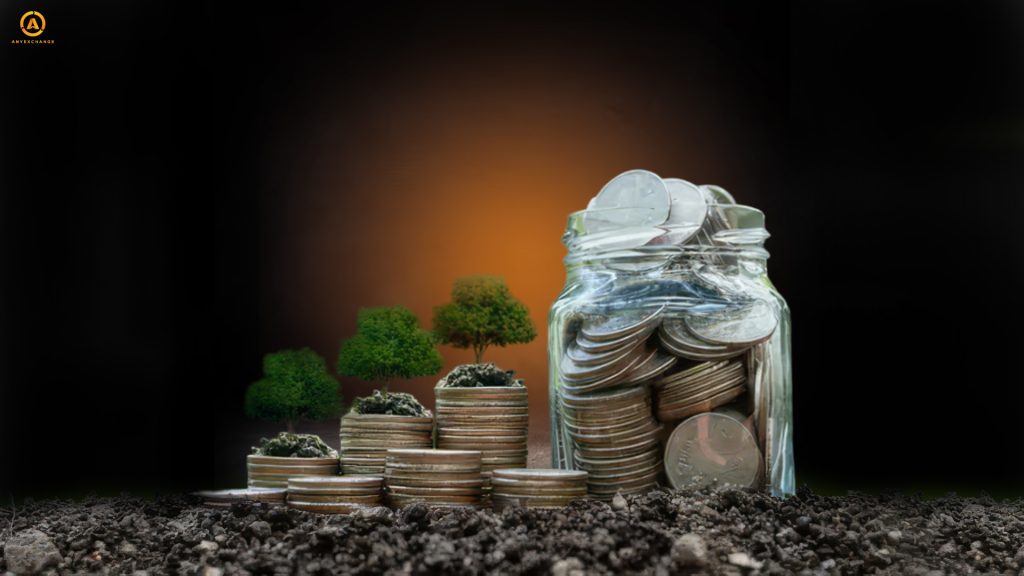
Mining is a unique technological achievement that allows many industries to develop effectively. Despite the huge list of advantages, innovative digital technologies have some features that negatively affect the environment.
Extraction of cryptocurrency is an energy-consuming process. This is especially true for those industries that operate on a proof-of-work mechanism. These systems need a huge amount of electrical energy to perform their tasks, the annual production of which involves the emission of up to 40 million tonnes of carbon dioxide into the atmosphere. Innovative green technologies, namely carbon credits, can help to compensate for this damage.
What are carbon credits?

Carbon credits are a new technological approach to managing carbon emissions. It is a kind of quota that has combined the traditional features of financial obligations and blockchain technology. The use of cryptographic components has allowed for the digitalisation of the reporting of mining enterprises. In other words, carbon credit turned into a token suitable for trading and control of decentralised platforms. On the Internet, these coins are referred to as green cryptocurrencies.
Notable features of a green coin?

Green cryptocurrency is a digital asset created to improve the energy efficiency of mining, including related processes (crypto transactions).
The main pros of a green currency.
- The main and major positive aspect is environmental sustainability. Negative emissions are minimised through the use of energy-efficient algorithms and support for environmental projects.
- Social and environmental responsibility take the second place after environmental sustainability. Developers of green cryptocurrency are actively working on increasing the purity of the crypto, which, in turn, has a positive impact on the environment.
To achieve good performance in solving the problems of energy intensity, it was possible to use unique technologies to reduce harmful emissions.
History of the emergence of carbon credits in the crypto industry
Carbon credits have been introduced into the crypto industry relatively recently. This process dates back to 2020-2021. It was during this period that environmentalists rang the bells about the huge harmful impact of mining on the state of our planet.
The main historical moments of solving the environmental problem are as follows.
- Bitcoin was the topic of much discussion in 2020. And surprisingly it was not related to its upcoming halving. The cause for concern was its huge energy consumption figures. This led to the development of carbon credits in parallel with other innovative technologies.
- The first to launch the process of tokenising carbon credits was the Toucan Protocol project. This took place in the year 2021. This is what contributed to the cryptocurrency industry integrating such offsets.
- In the same year, Klima Dao introduced a decentralised platform that was able to perform carbon credit token transactions.
Teaming up and working together on environmental projects enabled the purchase of carbon offset credits.
What consensus algorithms were involved?

There was a mention at the beginning of the article that computing machines run on proof-of-work (PoW), which has huge energy consumption figures. It was possible to reduce the carbon and heat emitted into the atmosphere by developing new algorithms.
- Proof-of-Stake (PoS) is a special algorithm that has replaced conventional mining with staking. It is characterised by low consumption due to the lack of need to perform complex computational tasks. A prime example of efficiency improvement is Ethereum 2.0, which replaced PoW with PoS. Experts note that since then, the coin has become a sustainable platform.
- Proof-of-Authority (PoA) – This algorithm is based on the popularity of validators rather than computing power. It needs a minimal amount of energy input. It is mainly used by private and corporate blockchains.
- Proof-of-Space and Time (PoSt) – Here validation is done due to the availability of free disc space. Energy consumption with this algorithm has been reduced several times. Chia NetWork crypto coin runs on it.
Energy efficient blockchains occupy a very important place in the development of digital technologies. Thanks to them, various cryptocurrency ecoprojects are being created to make the blockchain industry responsible, sustainable and environmentally friendly. Nowadays, the most acceptable instances such as Cardano (ADA), BitGreen (BiTG), Algorand (ALGO), Nano (XNO), Solarcoin (SLR) are in circulation in the cryptocurrency market. The cryptocurrency exchanger has supported environmental initiatives and added the above assets to its list of coins.
Benefits of investing in carbon credits

Cryptocurrency mining and ecology have found an understanding between them in the form of carbon credits, green cryptocurrency. These trends have a number of advantages that translate into cost-effective financial and environmental aspects.
Here are the main features of investing in carbon credits.
- Economic-financial aspect. Carbon markets have a huge demand for this type of digital product. The increase in the demand has especially become evident with the tightening of environmental regulations. Thus the number of cryptocurrency businesses that wished to acquire carbon neutral status has increased significantly. This indicator has become a kind of push for investors who are interested in increasing the value of carbon credits. Also, the benefit of linking blockchain and ecology lies in the possibility of carrying out portfolio diversification.
- Environmental aspect. Direct investment in carbon credits reduces greenhouse gas emissions and reduces the carbon footprint in the atmosphere. Thus increasing the environmental responsibility of both partners. The sustainability of carbon credits also supports environmental projects. The money generated from offset programmes contributes to the regeneration of renewable energy sources such as forests.
- Financial stability. Carbon tokens are sold on controlled markets such as the European Emissions Trading systеm. This platform acts as a guarantor for investors, as it makes it possible to anticipate the behaviour of the coin and make money transfers without any risks.
Tax benefits. Investors who choose to invest their savings in carbon credits receive financial incentives from the government (this programme is available in certain countries).
By actively investing in the credit, overall carbon reductions have been noted, so that environmental performance has begun to level off.
Key risks associated with carbon credits and cryptocurrencies
The tokenisation of cryptocurrencies’ energy consumption certainly has a positive outcome not only for the environment, but also for investors. Nevertheless, this process comes with financial and technical risks.
- Legislation that is responsible for the regulation of carbon credits has the power to make changes without warning. Most often, taxation rules can change. Thus investors are exposed to an increase in the cost item.
- Variable cost. The pricing of carbon credits depends on supply and demand in the market. If the need for this financing instrument decreases, there is a drop in price.
- The realisation of this type of lending has a protracted process due to its low visibility. Also, low liquidity can be caused by the fact that many mining companies operate in circumvention of the law, which leads to difficulties in popularisation.
- Fraud occurs in almost all spheres of human activity. Green technology has not been spared. Scammers try to pass themselves off as budding eco-activist start-ups. Extorting funds from investors leads to distrust in such projects, which in turn has a negative impact on the environmental situation.
- Verification also acts as a barrier to development. Since it is impossible to verify that emissions correspond to actual emissions.
- Climate factor. Rapid changes in the climate adversely affect the effectiveness of carbon projects.
These risks do not have a huge impact on investment. Investors, before financing any project, carry out a thorough analysis. This approach allows to exclude possible difficulties before the launch.
Carbon Offsets as a risk minimising factor
Carbon Offsets represent the merger of the crypto industry and credit. This merger offers an opportunity to reduce risk levels and increase overall efficiency.
Here are the main features of offset offerings.
- Transparency. Blockchains have a unique structure that does not repeat itself. This property allows monitoring of all processes, determining the origin and application of carbon credits.
- Accessibility. Virtual green coin, like its predecessors, does not know territorial boundaries. This makes it possible for investors to accept offers from various projects.
- The entire offset process is carried out without intermediaries. Smart contracts allow to automate the functionality and establish reporting.
The only disadvantage of carbon offsets is the technical dependence on the blockchain.
Where can I exchange green cryptocurrency?
AnyAxchange is a reliable service for exchanging fiat money for crypto coin, and vice versa.
The main advantages of co-operation with the firm:
The credibility of the company is confirmed by numerous positive reviews and the leading rating on the Bestchange platform.
Conclusion
Carbon credits and green crypto coins are an innovative breakthrough in green technology. Thanks to it, the cryptocurrency industry can grow in the right direction without having an unfavourable impact on the environment.
FAQ
What are carbon credits?
Carbon credits are a financial instrument that allows you to turn harmful emissions into green tokens.
What effect do carbon credits have?
Minimise pollution levels.
Where can I purchase green crypto coins?
AnyAxchange provides a wide range of services, which can be found on their web resource.





